How to Donate a Food Allergy Children’s Book to a Library
This post was inspired by my children’s book, “Be A Food Allergy Helper!” A Food Allergy Helper is a friend or family member that helps advocate for a safe and welcoming environment for those with food allergies. Keep reading to learn how to donate a copy of my book to your public or school library - or contact me directly for more information!
Last weekend I had the pleasure to be a guest reader at two special food allergy storytimes for local libraries back home in Iowa.
Author visits are so much fun - I just love talking to young children and families about food allergy awareness. Over 50 individuals attended the events!
At the special storytimes we sang songs, did a coloring sheet, and read my first children’s book, Be a Food Allergy Helper! At the Cedar Falls Library we spent additional time talking about food allergy awareness while the Waverly Library included more books and activities about food. Participants even got to practice washing dishes and their counting skills.
I was so grateful for the local connections that led to these events. It was also a surreal experience to see a book that I had written available for check-out from a library!
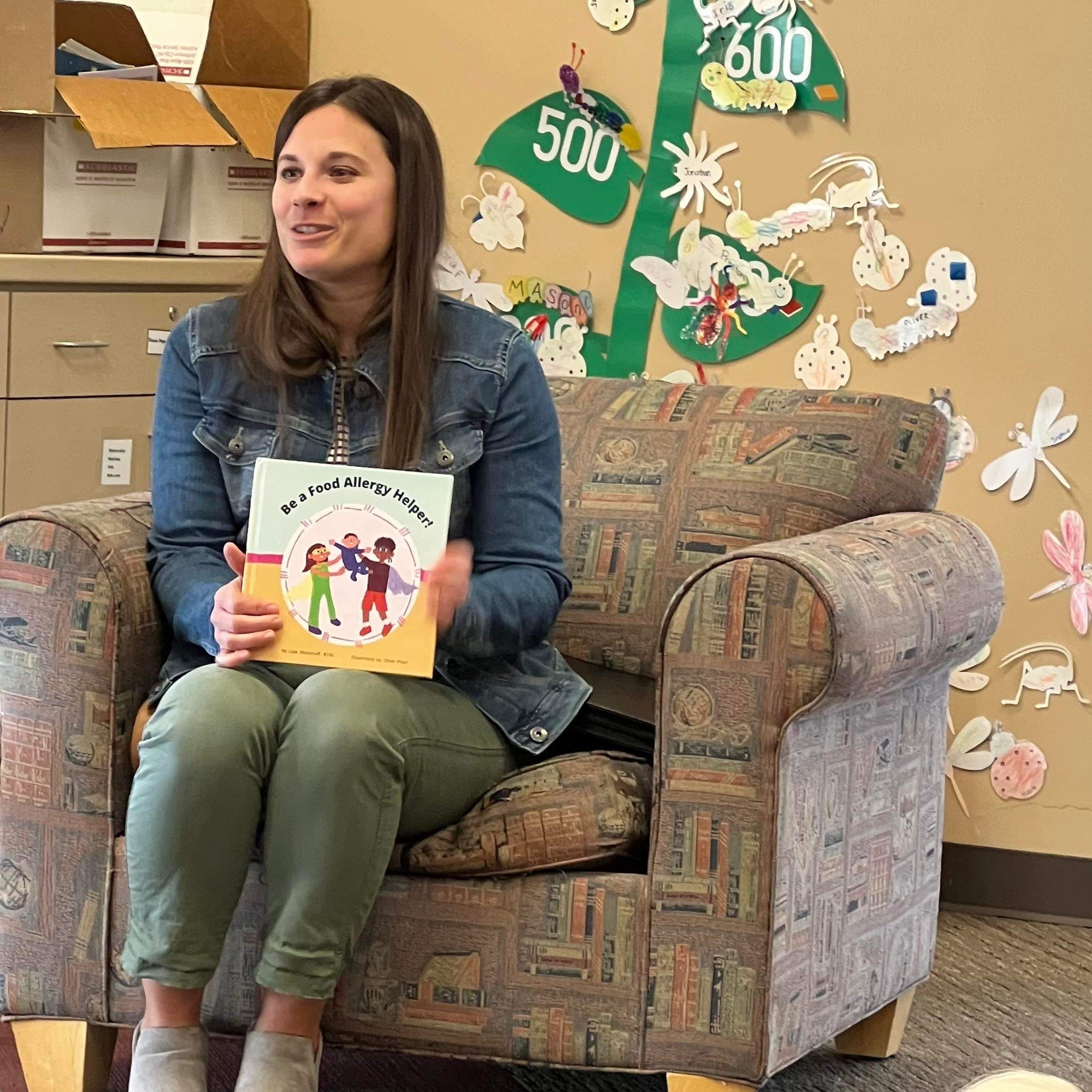
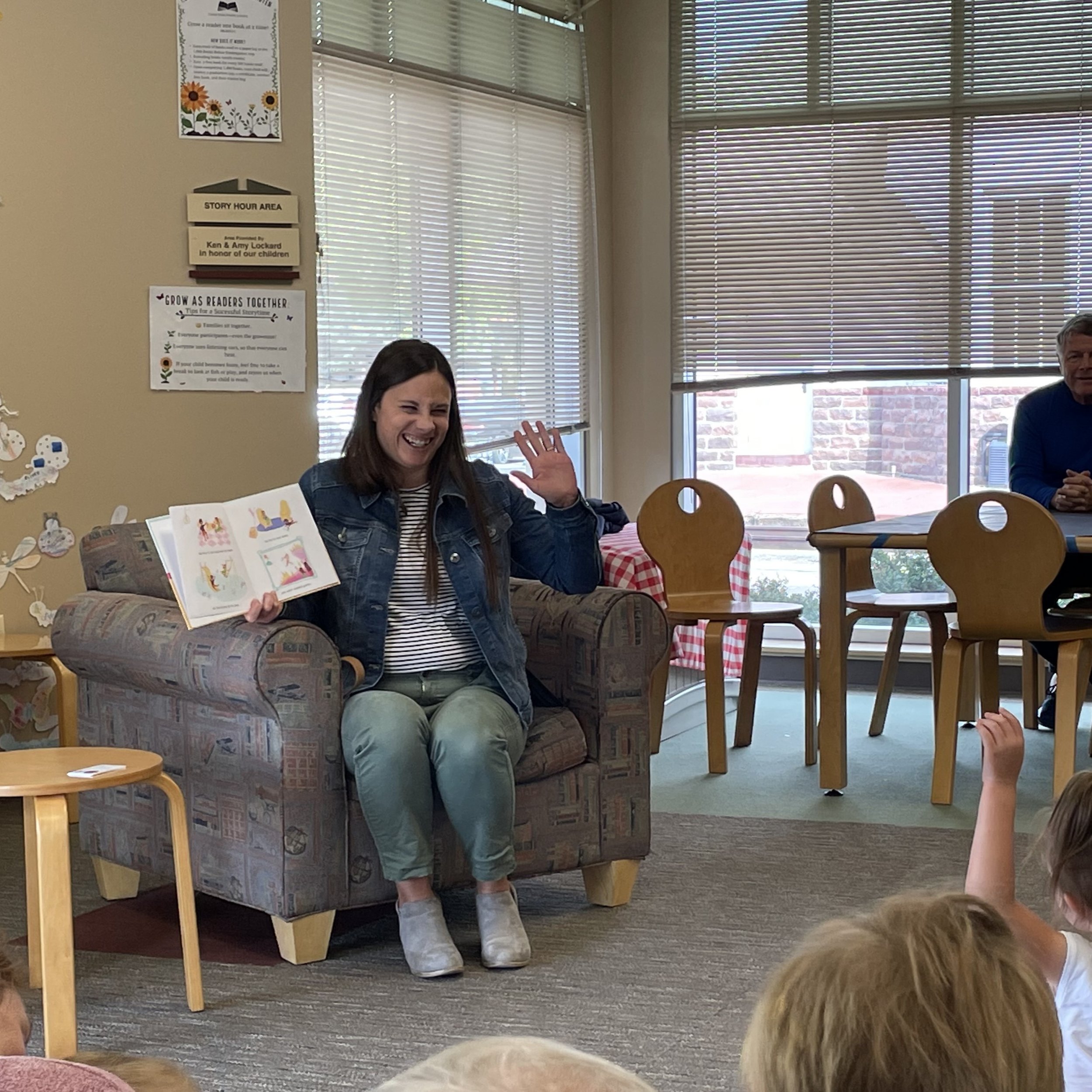


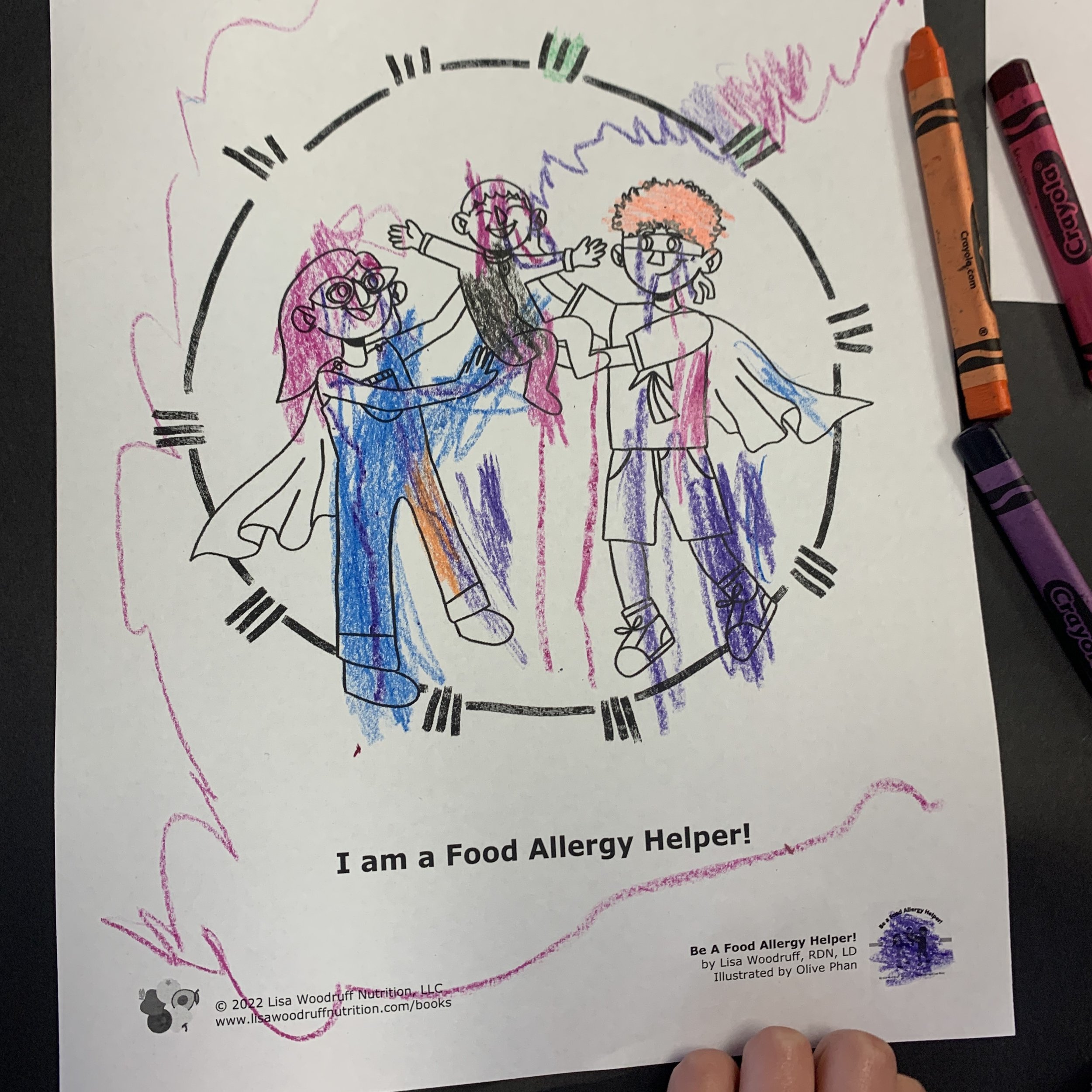
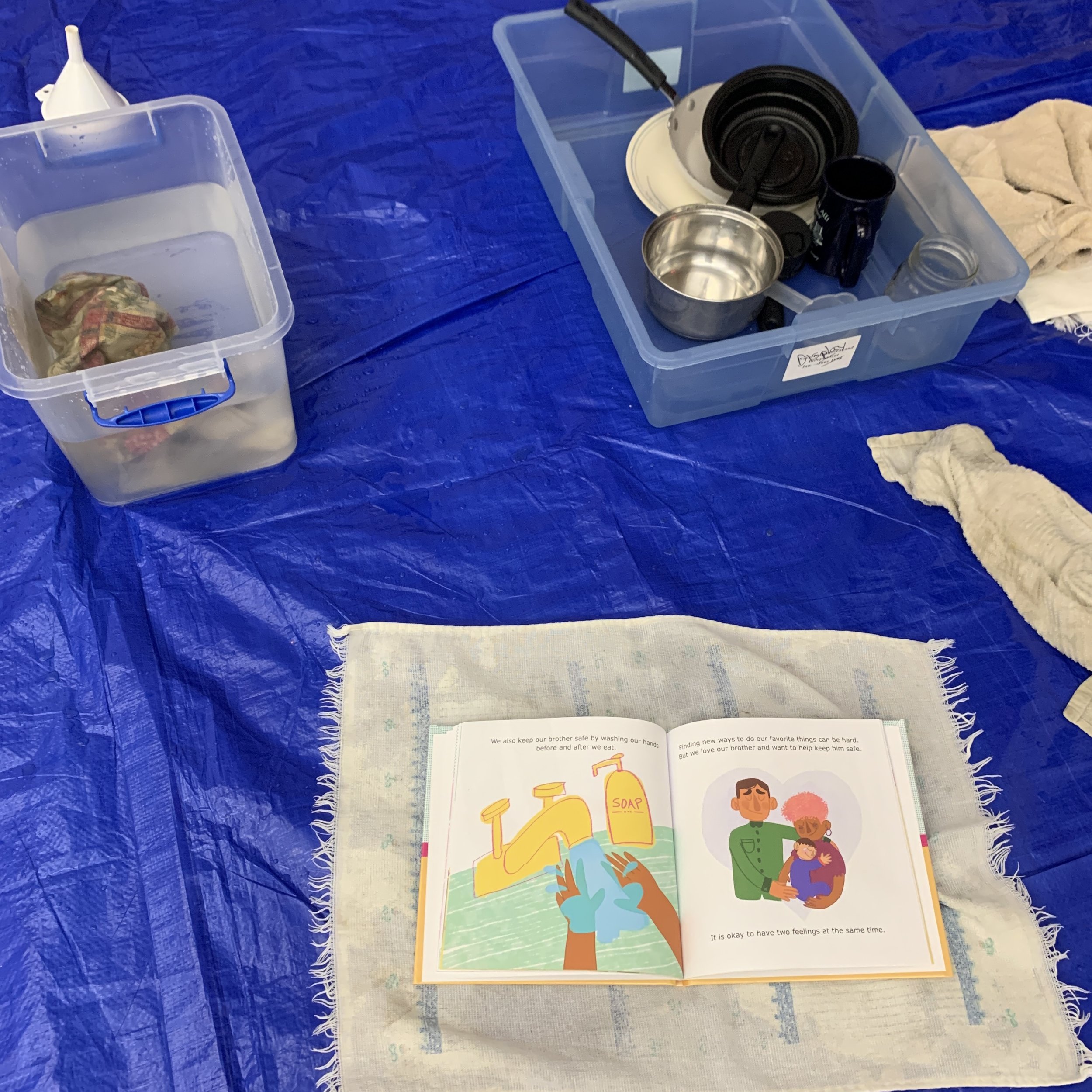
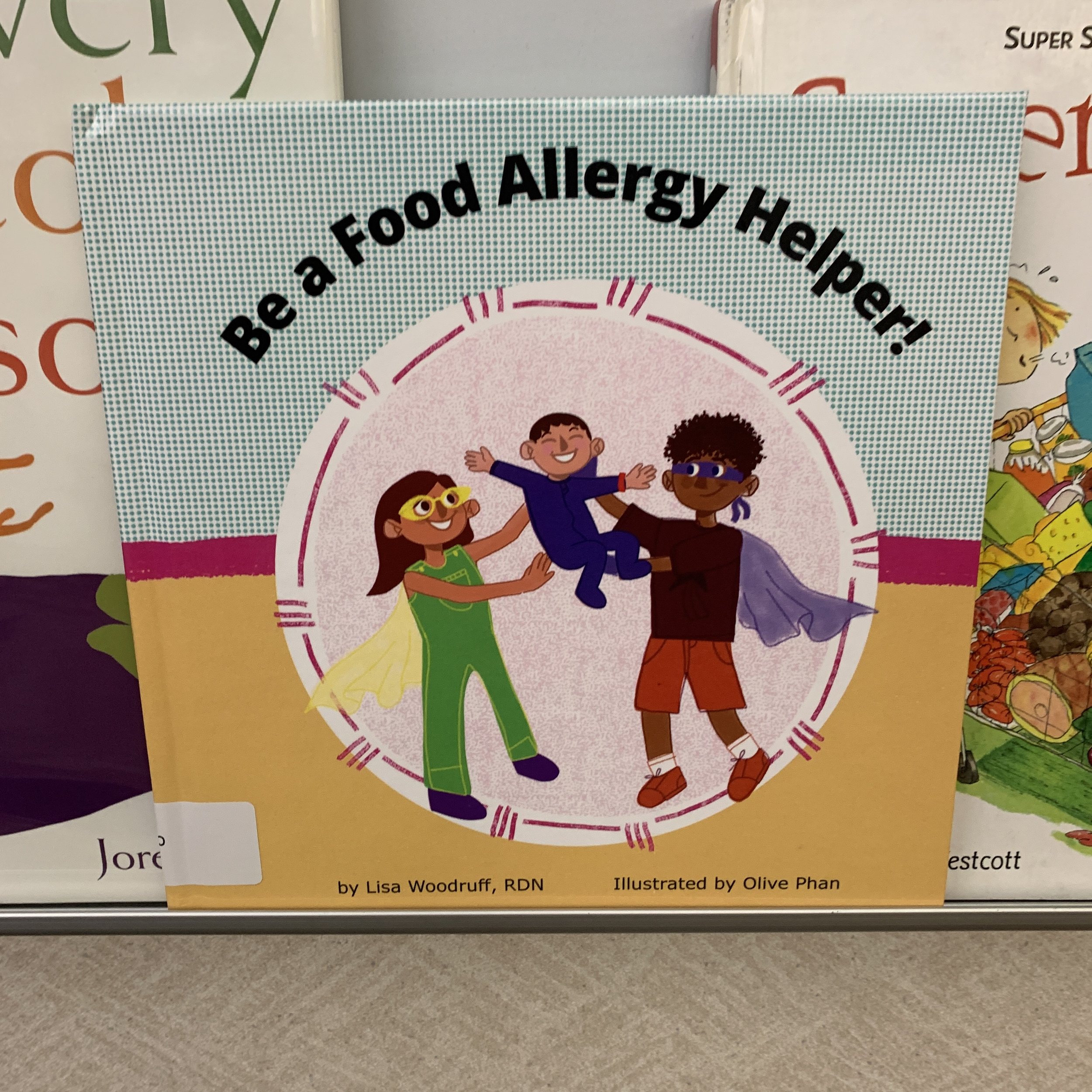
In this post, I wanted to share some pictures from the events as well as provide information on how we can donate more food allergy books to local libraries.
Reasons to Donate Self-Published Food Allergy Books
Why focus on donating? Many food allergy books for children tend to be self-published. This makes sense considering it is a niche demographic, but at the same time there are so many children that would benefit from reading about food allergies.
It is estimated that 1 in 13 children have a food allergy in the United States. But it’s not just kids with food allergies that can benefit from increased access to food allergy books. Siblings, friends, and classmates without food allergies also have questions and shared experiences to explore.
Children’s books can be a fabulous tool to learn about different allergens, epinephrine auto-injectors, and food allergy safety rules. These conversations can be extremely difficult to navigate, but food allergy children’s books can help. Earlier this month I shared some of my favorite children’s books about food allergies. Not on this list (but one of my family’s current favorites), is Charlie Learns About Her Food Allergies. This is a new children’s book written by a fellow Iowan and food allergy mom.
While self-publishing has led to so many great children’s books about food allergies, it has also made it difficult to find these books in your local library. This is because libraries tend to purchase books from distributors, not publishers or authors. However, food allergies can affect children and adults from all walks of life, so it is crucial that we advocate to make food allergy books more accessible to everyone.
This is why donating self-published food allergy books to libraries is so important.
Three Steps for Donating a Food Allergy Book to a Library
Donating a food allergy book is one way to see more of them in your school or city library. I’m sharing three easy steps for how you can help make this happen, whether it be my self-published book or a different one!
1) Reach out to the head children’s librarian to see if their library is able to accept a donated self-published book.
What to say: “[Introduce yourself and explain your relationship to food allergies, whether it be as a parent, individual, friend, or extended family member.] I noticed that your library only has [x] children’s books about food allergies in your circulation. [Explain why the library is important to you, for example your children have attended storytime and/or other youth programming or you live in the city that supports this library.]
“I was hoping to donate a copy of the book Be A Food Allergy Helper! by Lisa Woodruff, RDN. This book was written to help all children - especially siblings without food allergies - learn about food allergies and how to become a Food Allergy Helper. (More information is available on the author’s website at www.lisawoodruffnutrition.com/books.) Does the library accept donations of self-published books?”
2) Purchase a hardcover copy of Be a Food Allergy Helper! (or other self-published children’s book about food allergies).
This step is crucial - libraries really prefer hardcover copies of children’s books. They are much more durable and have a longer shelf-life. Think about how many hands will hold just one of these food allergy books!
When it comes to my book, Be a Food Allergy Helper!, the hardcover copy includes a Library of Congress Control Number and the publisher location, which is often required to get a book added to a library’s circulation.
Where to purchase my book: Be a Food Allergy Helper! is available to purchase online wherever books are sold. This includes Amazon, Target, Barnes and Noble, and other distributors. If you are located in the state of Iowa, you can also contact me directly as I have a limited inventory of books on hand and may be able to sell you a copy in-person.
3) Deliver the hardcover book to your local library!
Depending on the library, it may take some time to get the book cataloged and into their circulation. Once the book is placed on the shelves, you can further support it by being the first to check it out!
You can also help more families learn about Be a Food Allergy Helper! by sharing a photo on your social media and promoting that the book is now available to be checked out at your local library. If you donate a copy to a school library, you can also email your child’s teacher(s) and the school nurse to let them know this food allergy resource is now available for their students.
After you have donated a book (or more), please let me know where! I’d love to add more libraries to my list of locations where the public can access Be A Food Allergy Helper! All you need to do is contact me or fill out this quick survey. There are over 9,000 public libraries in the United States - let’s make food allergy books more accessible to children everywhere!
Don’t forget to write a book review!
If you have purchased a book for personal use or to donate for a classroom or library, please write a review! This small step is so important for the author and future sales.
If you purchased your book online through Amazon, Target, or another distributor, please go to that site and leave a rating, write a review, or share a photo of your book.
You can also submit a book review to be posed on my website and social media. Please include if you are a food allergy parent, medical professional, or teacher.
Want to learn more about food allergy nutrition?
Food Allergy Research & Education (FARE) offers a Be a PAL® program to help children better understand food allergies within the classroom setting. Kids with Food Allergies also has a list of fun ways to help teach children about food allergies.
In addition to these two great resources, I love to get out in the community and talk about all things food allergies. If you are interested in scheduling an Author Visit or public speaking opportunity, please contact me to learn more!



